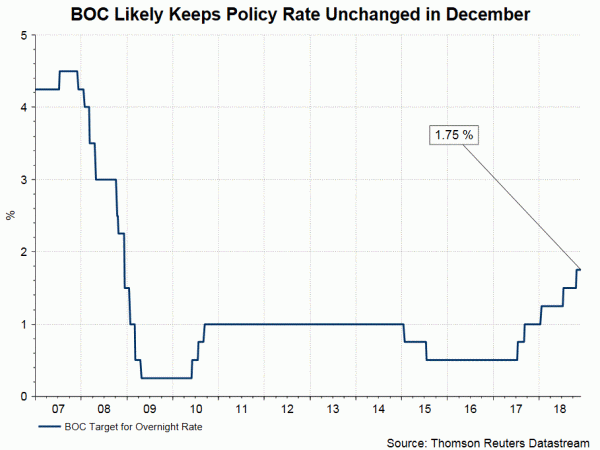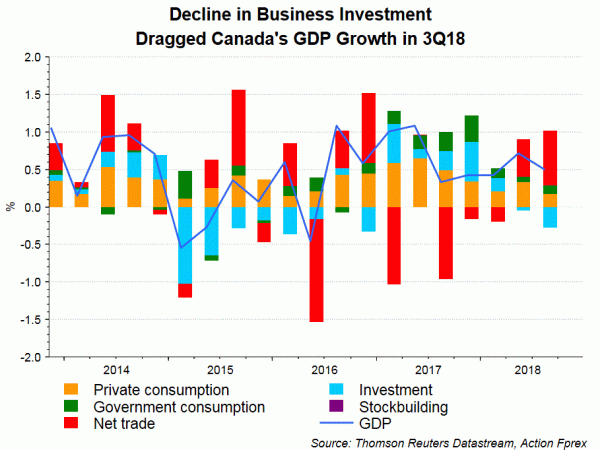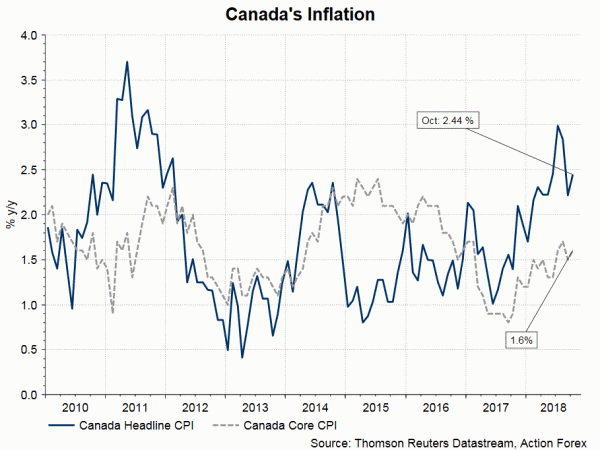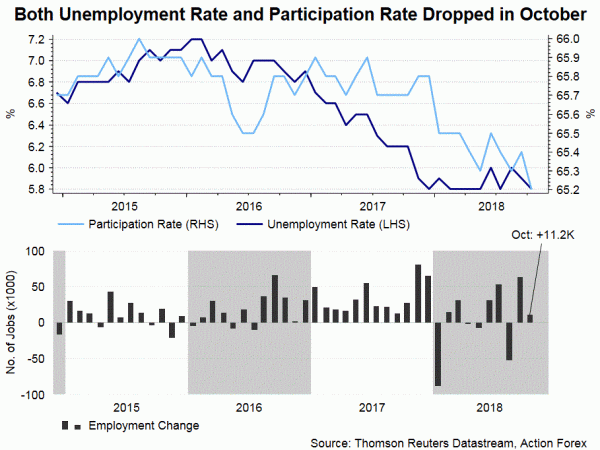Bank of Canada is expected to keep its policy rate unchanged at 1.75%, after a rate hike of +25 bps in October. Despite bets of another move this month, we believe policymakers would take a wait- and- see mode to assess the impact of the sharp fall of oil prices on Canada’s economy. Another focus is BOC’s forward guidance, whether Governor Stephen Poloz would stick to his hawkish stance that the policy rate would need to rise to the neutral rate would be closely watched.
At the October meeting, the central bank turned hawkish, replacing the “gradual” rate hike guidance by the need to increase the policy rate “to a neutral stance to achieve the inflation target”. The stance was maintained as Poloz spoke in London on November 5. Following Fed Chair Jerome Powell’s U-turn on monetary policy, it would be interesting to see if Poloz would act similarly. Indeed, a less hawkish stance in December is not something farfetched. Canada’s GDP growth eased to +2% q/q annualized in 3Q18, from +2.9% a quarter ago. Business investments fell -1.1% while growth in private consumption slowed sharply to +0.7%.
Headline inflation improved to +2.4% y/y in October, from +2.2% a month ago. The average of BOC’s three preferred “core” measures (the trim, median, and common CPI) climbed higher, by +0.1 percentage point, to +2%. The headline reading likely softened in November due to the sharp decline in energy prices. The job market remained strong. The unemployment rate slipped -0.1 percentage point to 5.8% in October, beating consensus of 5.9%. The number of payrolls gained +11.2K, easing from a +63.3K addition in September, but above consensus of +10K.













